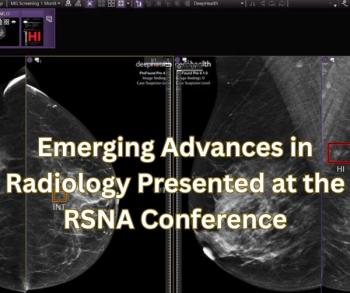
MRI Deep Learning Software from GE Healthcare Gets Expanded FDA Clearance
AIR Recon DL, a deep learning-based image reconstruction software, will now be available with 3D sequences as well as PROPELLER motion-insensitive sequences on magnetic resonance imaging (MRI) scanners from GE Healthcare.
The Food and Drug Administration (FDA) has
Noting enhanced image sharpness and an improved signal-to-noise (SNR) ratio, GE Healthcare said the compatibility of AIR Recon DL with 3D MRI imaging reduces the need for repeat 2D scans and may facilitate quick imaging results.
For pediatric, neurodegenerative, geriatric, and claustrophobic patients who may have trouble staying still for MRI exams, GE Healthcare noted the combination of PROPELLER sequencing and AIR Recon DL should lead to shorter exam times, faster patient throughput and an enhanced patient experience.
“By expanding AIR Recon DL to 3D and PROPELLER, GE Healthcare has closed the gaps in our ability to provide improved image quality and patient experience to all our patients across exam types, particularly for brain imaging where we rely heavily on 3D sequences and musculoskeletal imaging where PROPELLER is important for reducing image quality variability and eliminating repeat sequences due to motion,” noted Tiron Pechet, MD, an assistant professor of radiology at the University of Massachusettes Medical School and an assistant medical director with Shields Health Care Group.
In addition to being available on the GE Healthcare’s new MRI scanners, the expanded applications of AIR Recon DL to 3D and PROPELLER sequences will be available as upgrades for previously installed 1.5T and 3.0T MRI systems from the company, according to GE Healthcare.
Newsletter
Stay at the forefront of radiology with the Diagnostic Imaging newsletter, delivering the latest news, clinical insights, and imaging advancements for today’s radiologists.




























